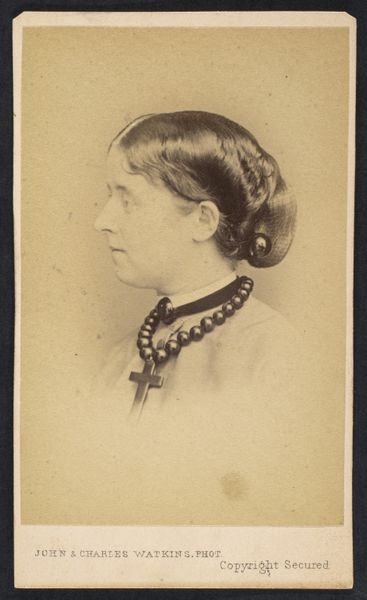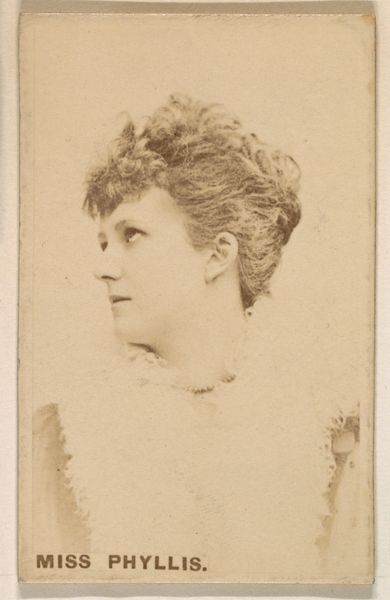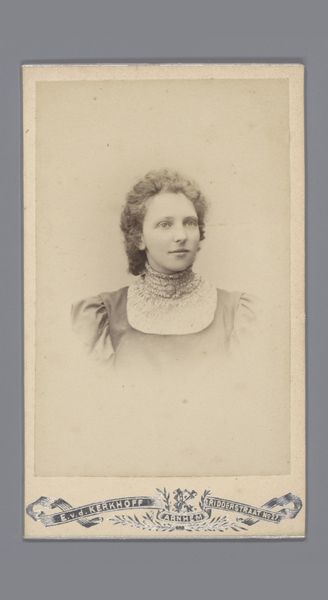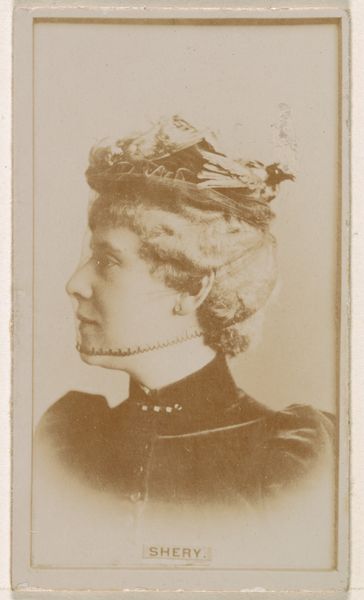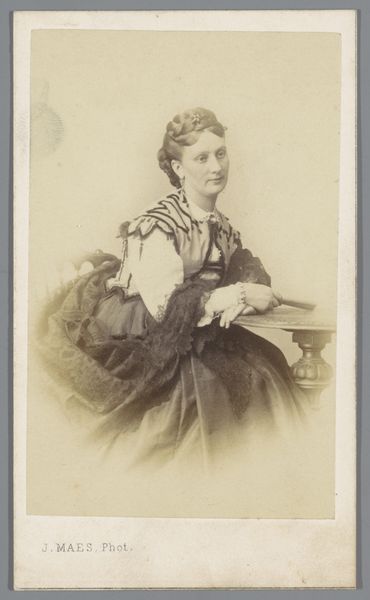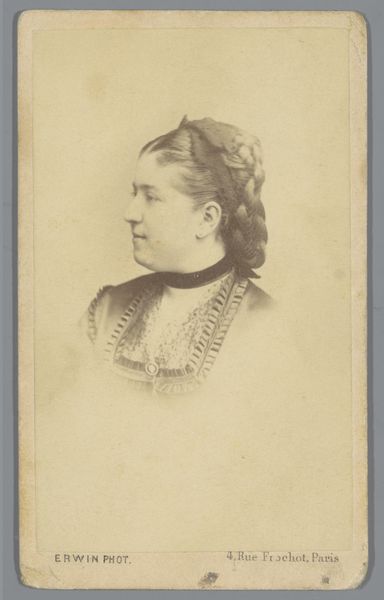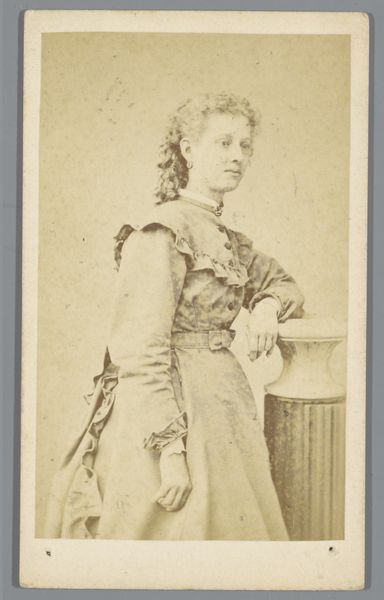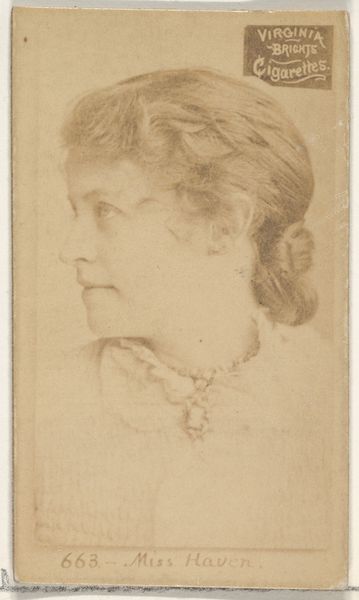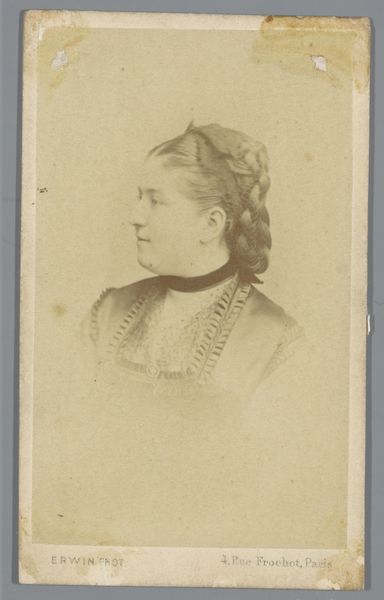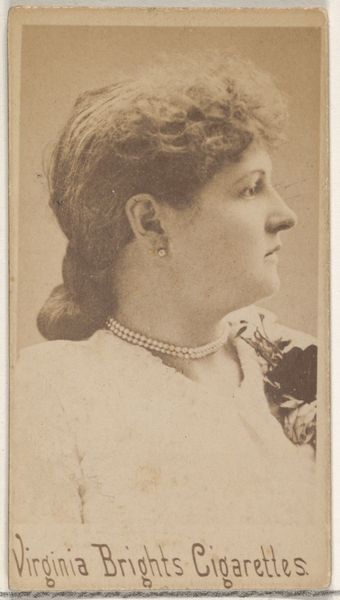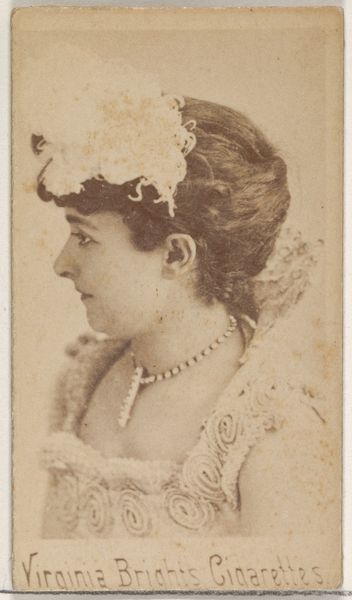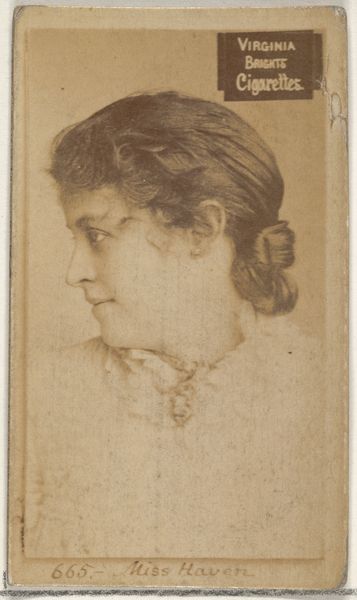![[Florence Anne Claxton] by John and Charles Watkins](/_next/image?url=https%3A%2F%2Fd2w8kbdekdi1gv.cloudfront.net%2FeyJidWNrZXQiOiAiYXJ0ZXJhLWltYWdlcy1idWNrZXQiLCAia2V5IjogImFydHdvcmtzL2E0ZmQzODIxLTk2YzQtNDEyOS1iYjdmLTM2OThlMDEzZGQ4NS9hNGZkMzgyMS05NmM0LTQxMjktYmI3Zi0zNjk4ZTAxM2RkODVfZnVsbC5qcGciLCAiZWRpdHMiOiB7InJlc2l6ZSI6IHsid2lkdGgiOiAxOTIwLCAiaGVpZ2h0IjogMTkyMCwgImZpdCI6ICJpbnNpZGUifX19&w=3840&q=75)
Dimensions: Approx. 10.2 x 6.3 cm (4 x 2 1/2 in.)
Copyright: Public Domain
Editor: Here we have a photograph titled '[Florence Anne Claxton]' dating back to the 1860s, credited to John and Charles Watkins. It’s a delicate, almost faded image, depicting a woman in profile. It gives off a certain reserved elegance. How do you interpret this work within the context of its time? Curator: Well, what immediately strikes me is the power dynamics inherent in portraiture, especially photography in the 1860s. The subject, Florence Anne Claxton, was herself an artist. I see this portrait less as a neutral depiction and more as an engagement with how women artists were seen – or, perhaps, how they wanted to be seen. Does her demure profile challenge the stereotype that female artists lack creative and intellectual ambition? Editor: That's a perspective I hadn't considered. It almost seems subversive now. Were there constraints on how women artists could present themselves at that time? Curator: Absolutely. Victorian society imposed rigid expectations on women. Consider the limitations on their access to formal art education, and the art world gatekeepers who controlled exhibitions. The adornments she wears become quite significant as social codes—not merely pretty accessories. And this photographic medium itself–what statements were these portrait galleries attempting to project through displaying such works? Editor: So, her choice to present herself in this specific way could be seen as a subtle act of defiance, perhaps negotiating the constraints of her gender and profession? It reframes the image as more than just a portrait; it's a statement. Curator: Precisely. It invites us to question whose gaze is being centered and who has the agency to construct their own image. What seemed like a typical portrait actually becomes layered with complex social and personal meaning when examined closely through this lens. Editor: This discussion has completely changed how I perceive the photograph. Thank you for highlighting that important context! Curator: And thank you for your astute observations. Considering these power dynamics makes viewing historical artworks even more enlightening.
Comments
No comments
Be the first to comment and join the conversation on the ultimate creative platform.
